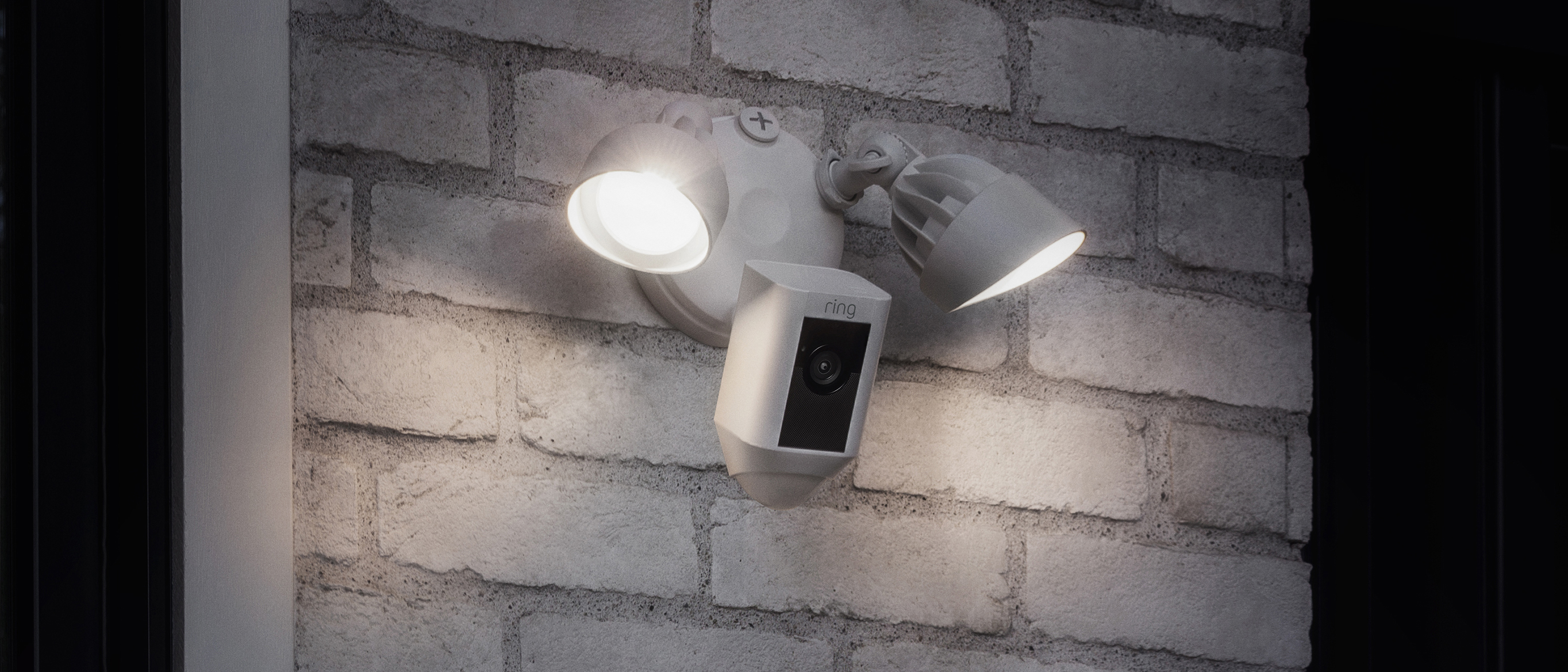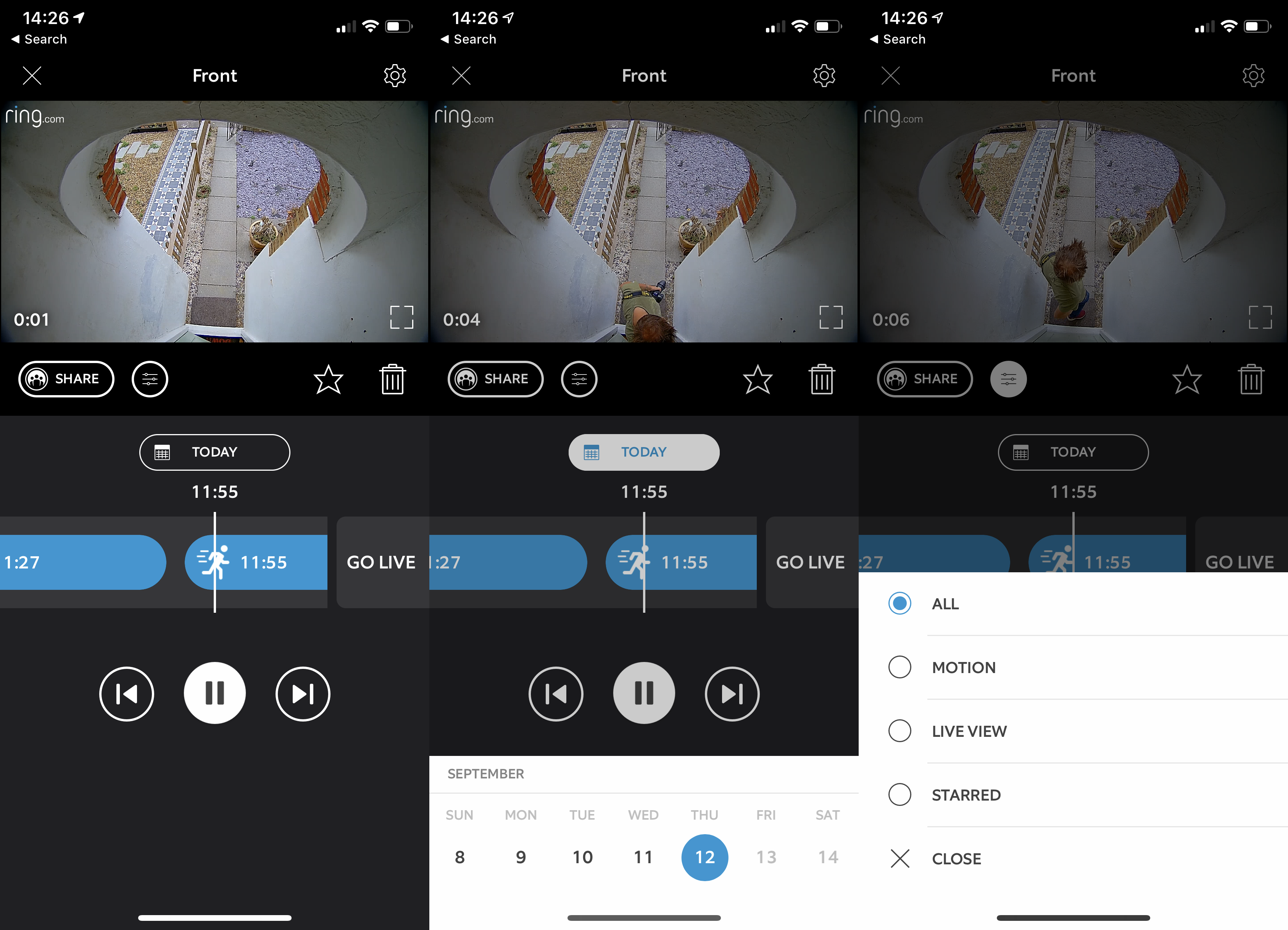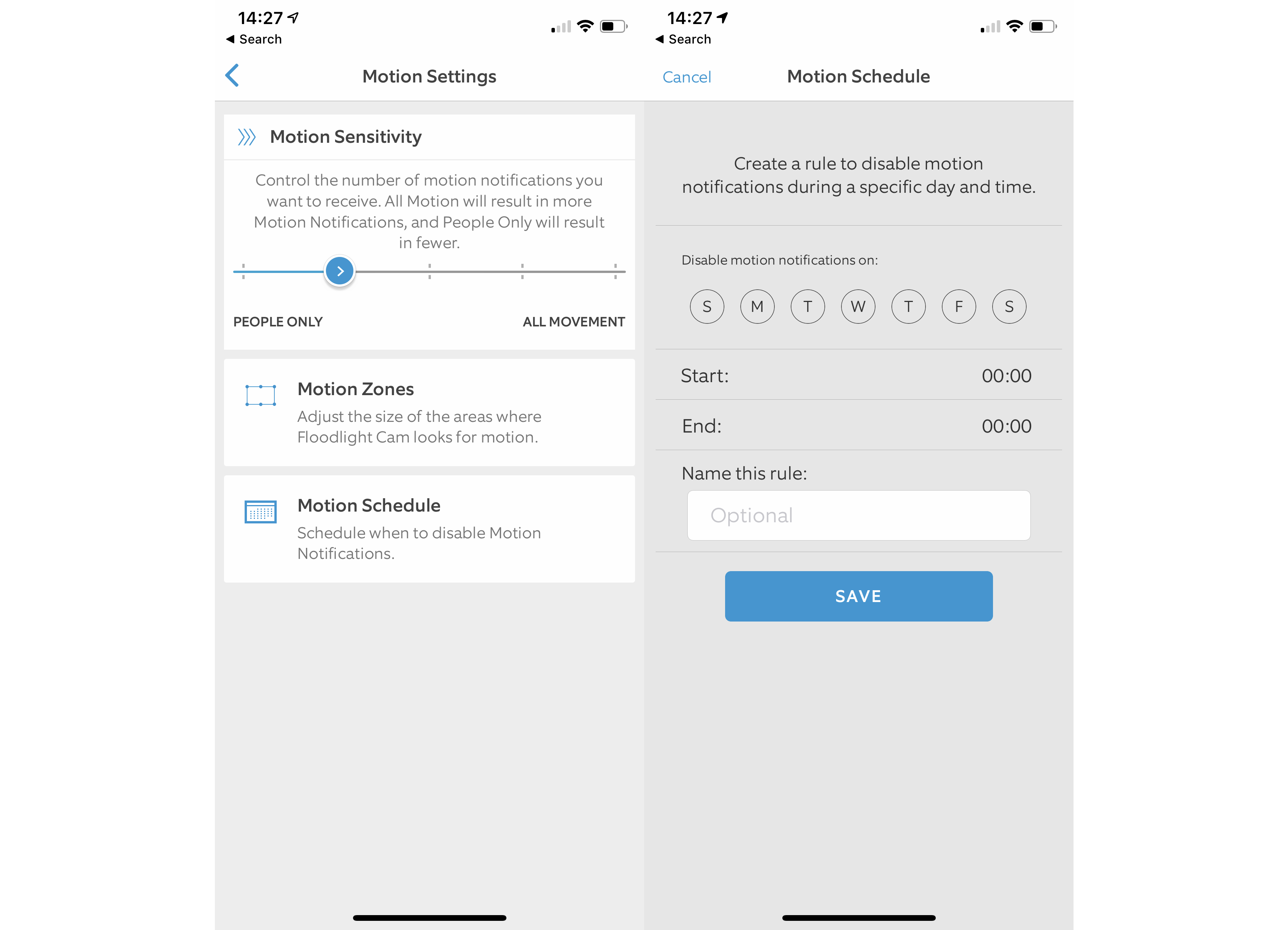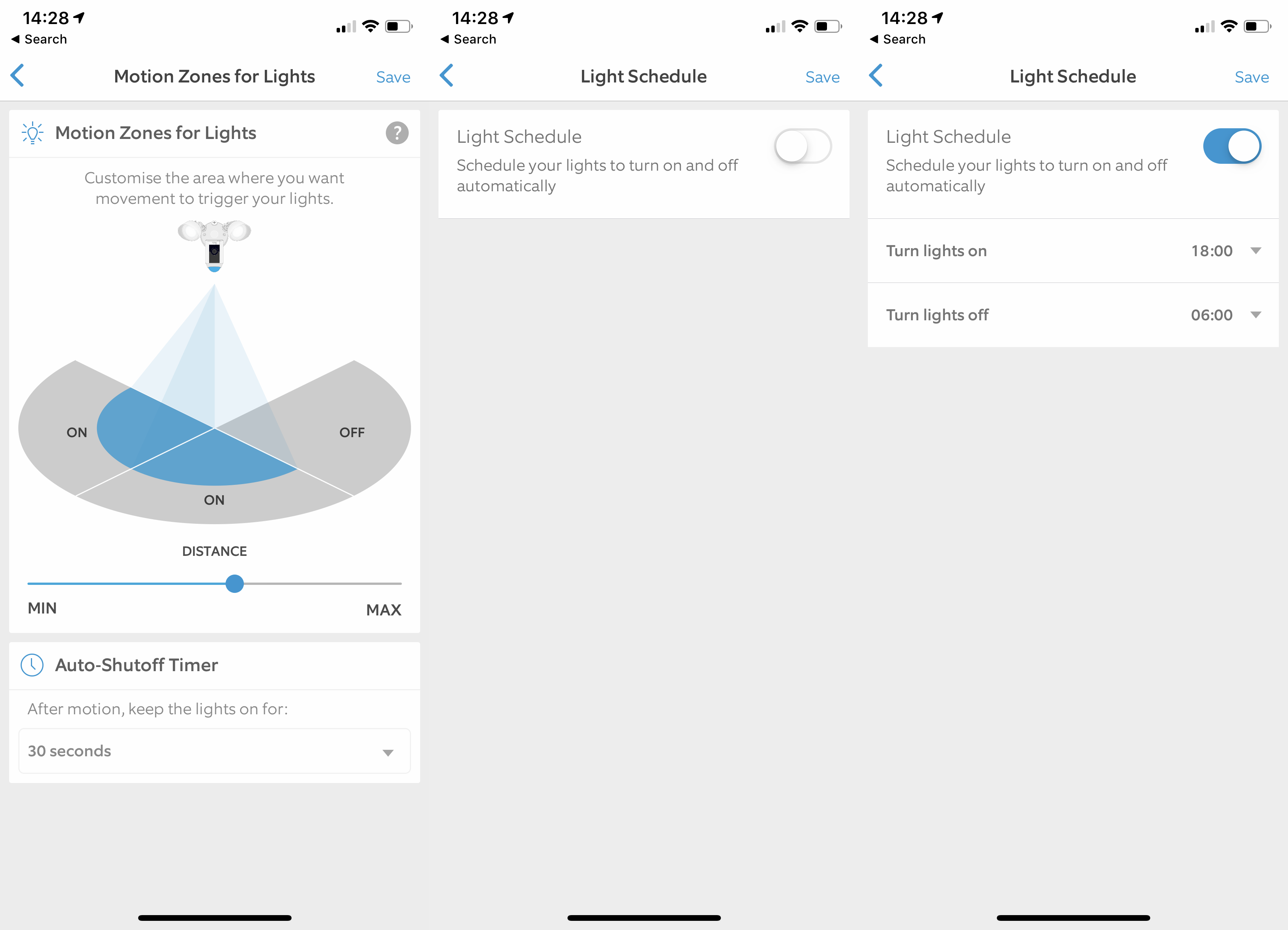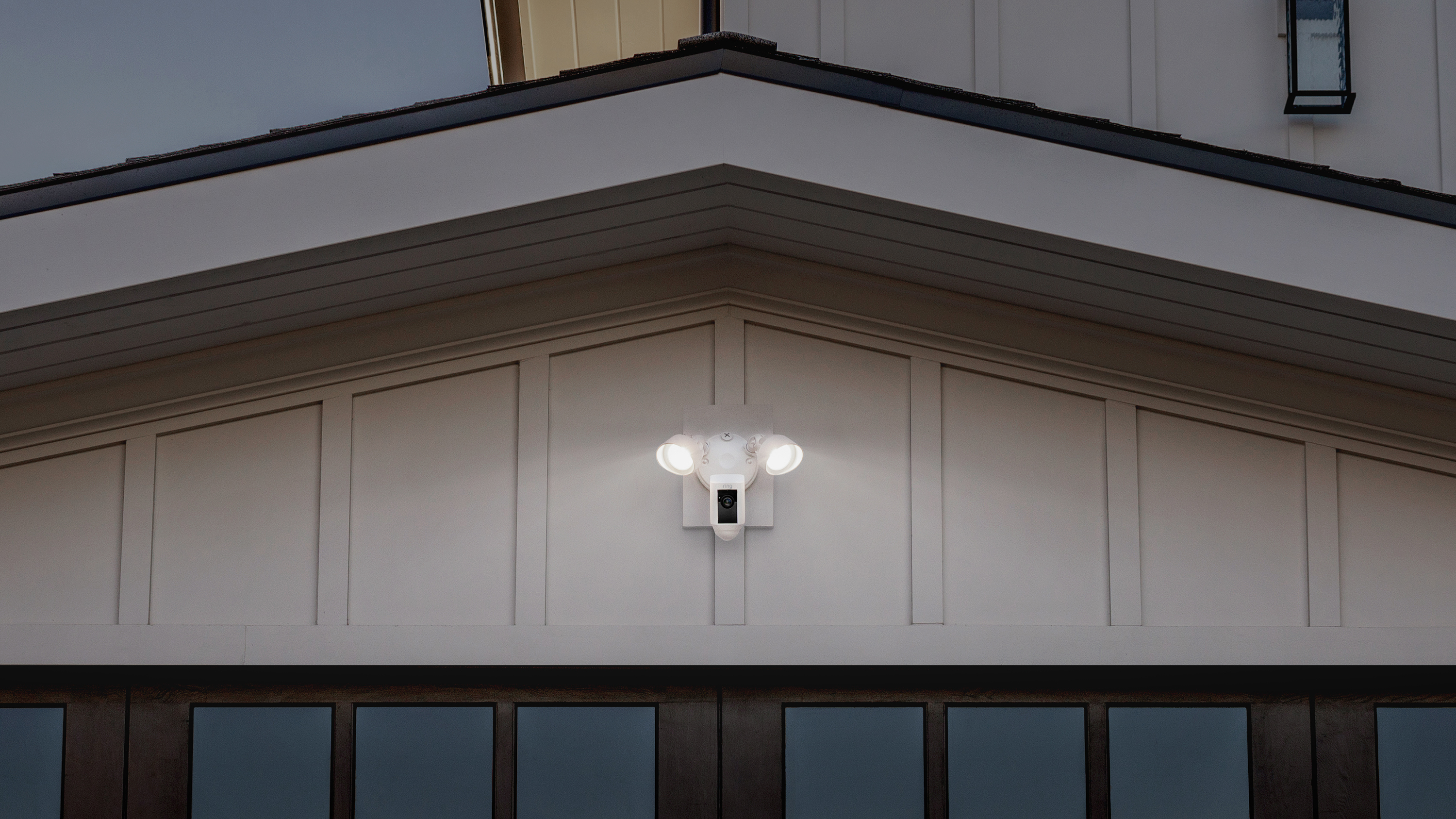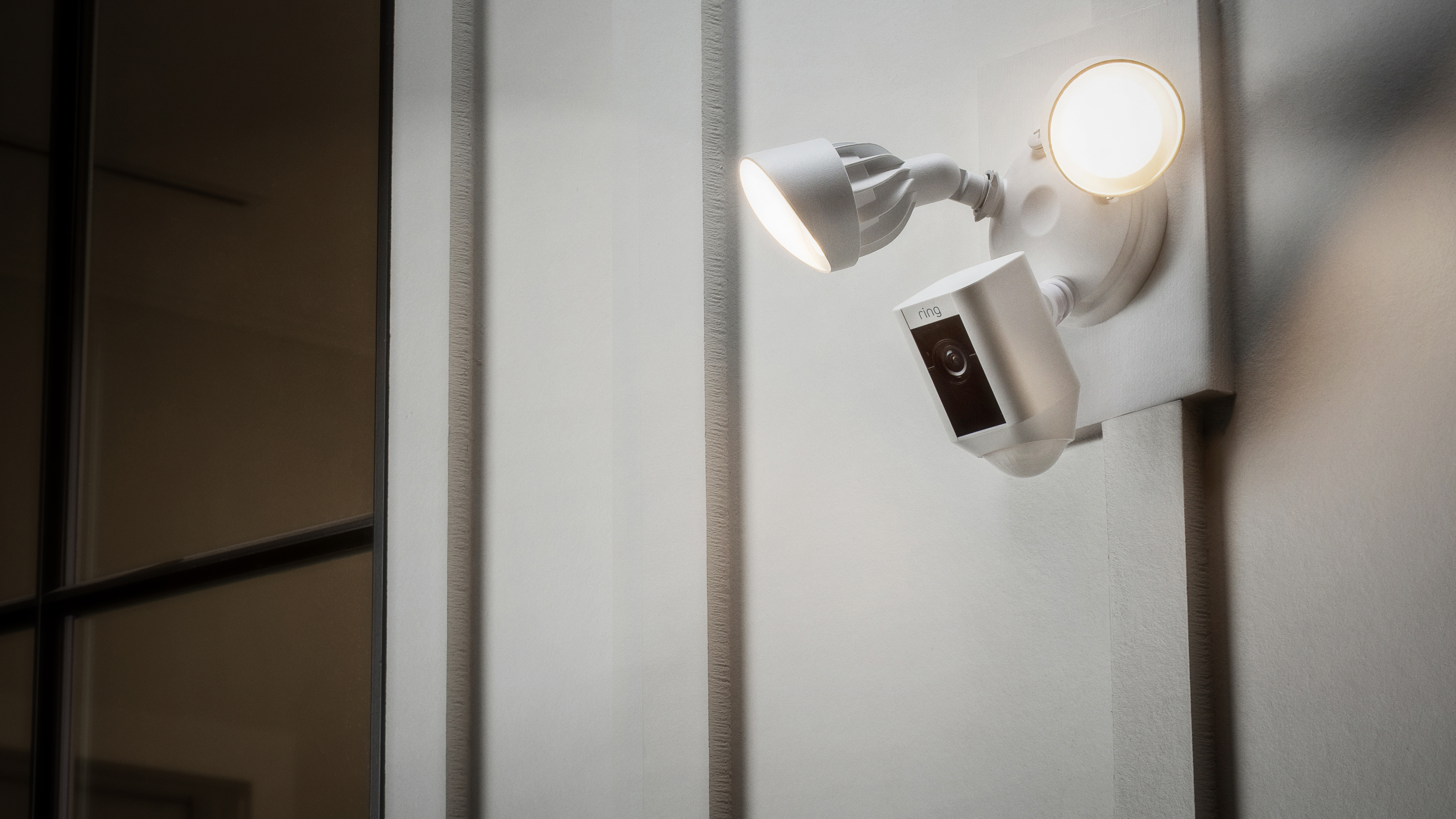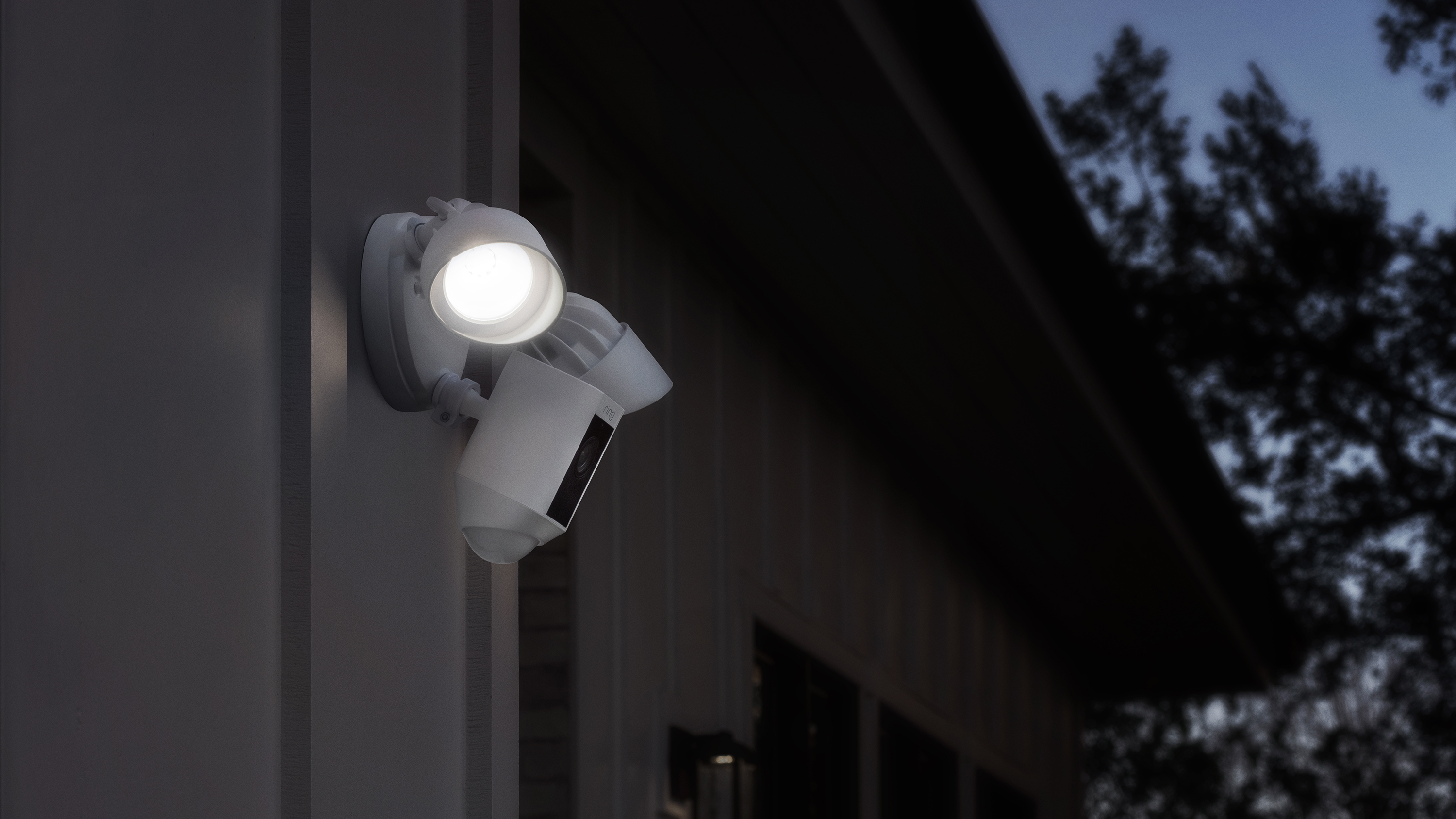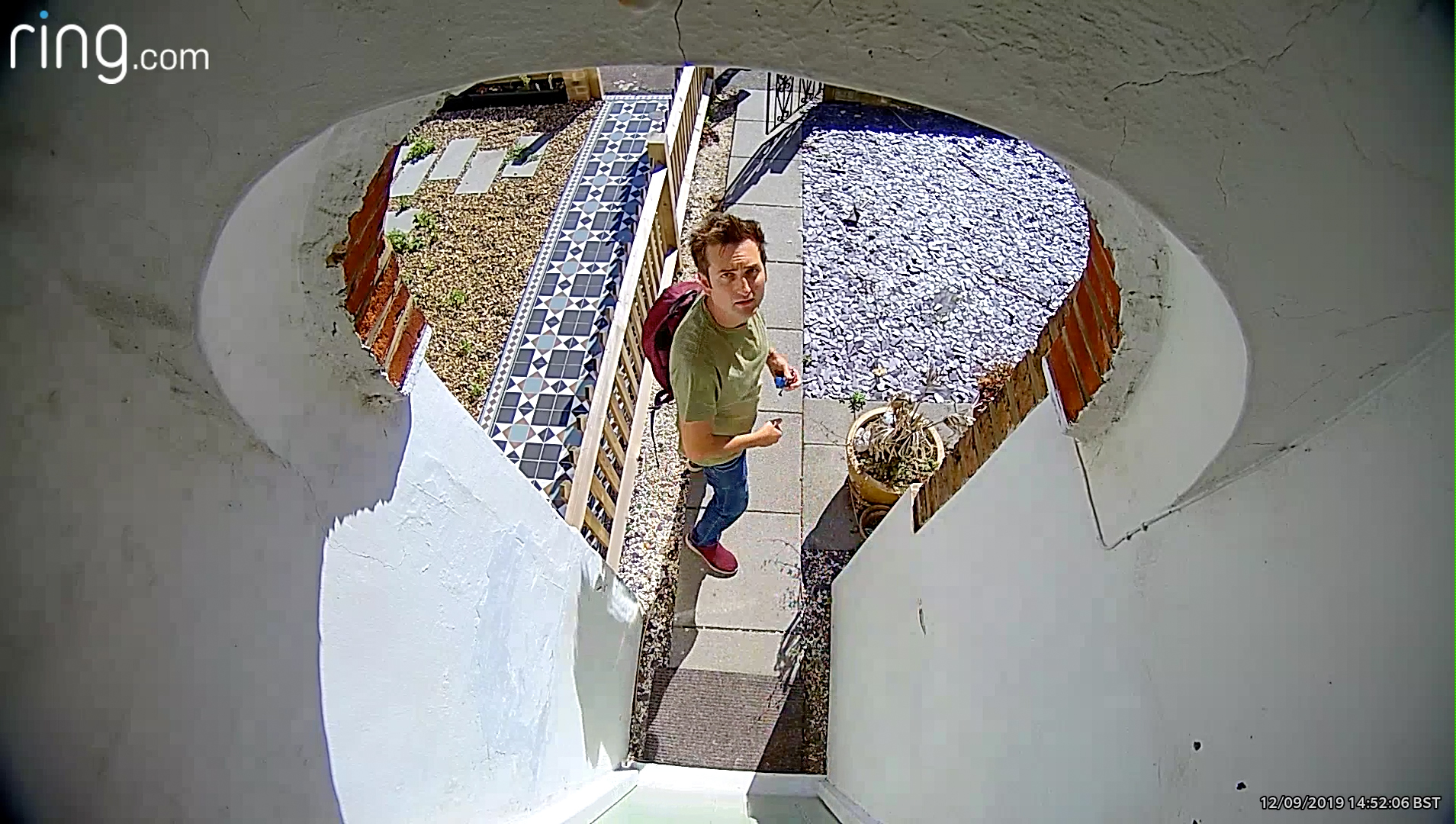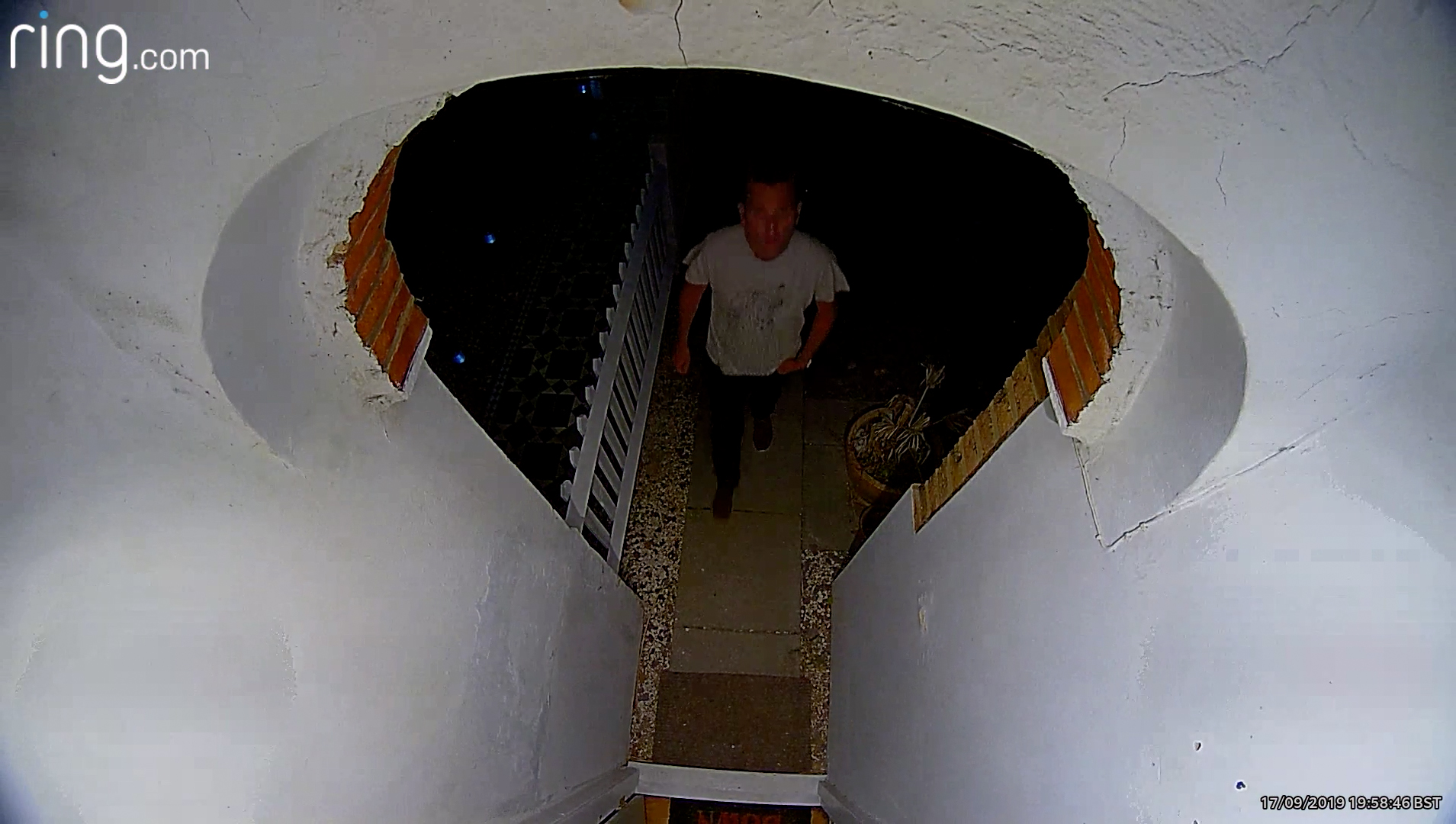While most security devices tend to do a single job, the Ring Floodlight Cam is designed to do two: it’s a security camera and a motion-activated floodlight all in one. The Ring Floodlight Cam has two bright lights, which can be manipulated to illuminate specific areas.
Excellent image quality and the combination of defenses make the Ring Floodlight Cam a great choice for protecting the front of your home, although installation can be slightly fiddly and the camera doesn’t have quite the level of adjustment that we’d like.
A battery-powered model of this camera is available, which uses a PIR motion sensor for movement recording; we’ve reviewed the more powerful wired version, which gives you more control over when the video is recorded.
Ring Floodlight Cam: Features
- Optional cloud recording
- Floodlight triggered by motion or schedule
- Motion Zones control alerts
Resolution: 1080p
Camera lens: 140-degree
Night vision: Yes (color)
Recording options: Optional cloud
Two-way talk: Yes
WiFi: 2.4GHz 802.11n
Integrating neatly into the Ring app, the Ring Floodlight Cam can sit alongside any of the company’s other cameras including the Ring Door View Cam. As with other cameras in the range, the Ring Floodlight Cam gets a thumbnail image showing you what the camera can see. This footage isn’t live, but a still grab from when you open the app.
Tapping the thumbnail view opens up the live view, letting you stream footage directly from the camera to see what’s going on. From this view you can tap the microphone icon, so that you can chat with anyone that you can see, potentially warning off a burglar. Although it’s not a smart doorbell, the Floodlight Cam has a loud speaker and its microphone picks up audio neatly. You can also set off an alarm: it’s loud enough to draw attention but not proper alarm loud.
From the live view, you can flick back through previous events to see previously-recorded footage. This requires a subscription to the Ring Protect plan, which costs $3 a month ($30 per year) per camera for 60-days of recording history. There’s also the Ring Protect Plus Plan for $10 a month ($100 a year), which gives you 60-days of recording history for unlimited cameras plus professional alarm monitoring for anyone with the Ring Alarm.
Scrolling through past events can be time-consuming, although you can use the calendar to jump to a specific date, and you can filter by the event type: motion detection or live view. If you’re looking for a specific event, the recent activity page might be easier to use, giving you a list of every recorded event. Again, you can filter by event type, although you can’t filter by date and the view would be better if you also got a thumbnail preview.
Viewing any recording from anywhere in the app gives you the option to download the clip to your smartphone to preserve it. Ring also has a web interface that lets you download clips to your computer.
The Ring Floodlight Cam records when it spots motion using the camera’s image sensor. To control exactly when the camera records, you can draw Motion Zones: only motion in these areas will trigger an alert and notification.
That’s far greater control than you get with Ring’s cameras that rely on PIR motion sensors, as you can focus on the exact areas that you want, say ignoring a busy street or neighbor’s driveway. It would be nice if Ring enabled object detection so that you could only be alerted when a person is spotted, as you can with the Nest Cam Outdoor.
You can also pause notifications to prevent a flood of alerts, such as for when you have workmen coming in and out of your house. The Ring Cam gives you the option of pausing alerts for 15-minutes, 30-minutes, one-hour or two-hours.
You can’t enable or disable the camera using geolocation on your smartphone, but you can manually turn off motion detection for privacy and you can disable alerts, too. There’s also a schedule option, although this only defines when the camera will send you alert, which is handy for maintaining external security while reducing the number of alerts that you get.
When your Ring Floodlight cam detects motion, you can get your other Ring cameras to record too, which may reveal further suspicious activity
There is a PIR motion sensor on the camera, but this just controls the camera’s floodlights. The light only works when it gets dark enough, so you don’t have to fiddle with any controls to work out when the light should start working.
The downside is that the PIR sensor will turn on the light when there’s any movement. Using the app, you can adjust the motion sensitivity and disable parts of the motion sensor, to reduce how often the light comes on. There’s also a setting to choose how long the light should stay on once it picks up motion: 30 seconds, or one, three, five or 15 minutes. Alternatively, the floodlight can be programmed to come on automatically during the hours that you set.
Newly released is the linked devices feature. When your Ring Floodlight cam detects motion, you can get your other Ring cameras to record too, which may reveal further suspicious activity. Reversed, you can get the Ring Floodlight Cam to record and/or turn on its light if another Ring camera in your home picks up movement.
Ring Floodlight Cam: Design and build
- Dual lights let you cover the area you want
- The camera is easy to reposition
- Requires hard wiring
There are three parts to the Ring Floodlight Cam: two lights and the main camera, which also house the PIR motion sensor. Each component is located on its own adjustable mount, giving you a fair degree of freedom to point the camera and each light where you want them. The rival Netatmo Presence has a single light built into the camera with less flexibility; however, that product can be configured to only turn on the light when a person is detected, whereas the Floodlight Cam turns on for any detected motion.
The weather-proof body feels tough and well-made, while the black plastic finish means that the entire unit is no more intrusive than a traditional security light.
You have to wire the Ring Floodlight Cam in permanently to the mains, and there’s no plug on the end of it. If you’ve already got an outdoor light, the Floodlight Cam should be a like-for-like replacement, but you may need to call in a professional for a new installation.
Installation can be a bit tricky. Ring has designed the Floodlight Cam to be mounted vertically on a wall, but this may not be possible in all homes. With our home, a Victorian Terraced house, the front door is located in a small porch and there’s not enough wall space to put the Floodlight Cam without bumping into it. So, even though it’s not recommended, we installed the camera on the roof of the porch, angling the camera down to look at the path. We had just enough adjustment to do this, but we’d like Ring to give more flexible installation options.
Wiring can be fed through a wall straight into the back of the camera’s mount. If that’s not possible, you can run power externally, feeding the cable through a rubber grommet in the side of the mount.
Once the cabling has been connected up, there’s not a huge amount of room to put the camera on its mount, and we had to wiggle it into place, carefully fitting the small retaining screws into place. An ever-so-slightly-larger base would have made the job a lot easier.
Ring Floodlight Cam: Performance
- Excellent motion detection performance
- Color night vision helps add detail
- Bright floodlight makes it easy to see what’s going on
Motion detection for recording is excellent on this camera. Correctly setting up Motion Zones, we found that we only got notifications in these areas and that the camera wasn’t fooled, such as by cloud cover moving and casting ‘moving’ shadows.
It’s harder to control the security light: we managed to get our camera so that it mostly only triggered for people (or animals) on our path, but that our neighbor would occasionally set off the camera by walking to their front door.
Video quality is as good as we’ve come to expect from Ring, with a 1080p sensor providing sharp detail and that 140-degree lens capturing everything going on around the camera.
During the day, there’s some noticeable sharpening on the picture going on, creating a slightly hyper-real image. Fortunately, the detail is preserved, and you can find a still frame where you can clearly identify individuals.
At night, the camera has IR LEDs for recording. You can record in black and white, where the image gets a touch softer, but this model also supports full-color recording, delivering a sharp night-time image that other cameras, bar the Arlo Ultra, can’t rival. If someone sets off the floodlight, then the area gets flooded with a combined 1800 lumens, letting the camera record in full color regardless of the mode you’ve set, giving you a sharper image with more detail in it.
You can view your camera’s feed using an Amazon Echo Show smart speaker, although there’s currently no option to do the same using a Google Nest Hub, as there’s no Ring skill for the Google Assistant.
Ring Floodlight Cam: Verdict
Security lights are a great way to protect your home, putting off burglars and also making it more convenient for you, lighting up your entryway. Having the combination of floodlight and security camera makes a lot of sense, and Ring has mostly got it right with the Floodlight Cam.
The dual lights are easy to position, so you can point them where you want, and they’re very bright, while the maneuverable camera lets you focus it where you need it. However, we’d like to see the floodlight controlled by the camera’s sensor for more accurate results than with its PIR sensor. That’s what the Netatmo Presence does, although that camera’s light is dimmer and less flexible in positioning.
Motion recording is easy to fine tune with Motion Zones cutting down on false alerts, although it’s about time that Ring introduced cloud processing to let you only get alerts when a person is spotted.
Still, despite these minor complaints, the Ring Floodlight Cam is a great utility device, delivering high-quality recorded images and a bright floodlight.
